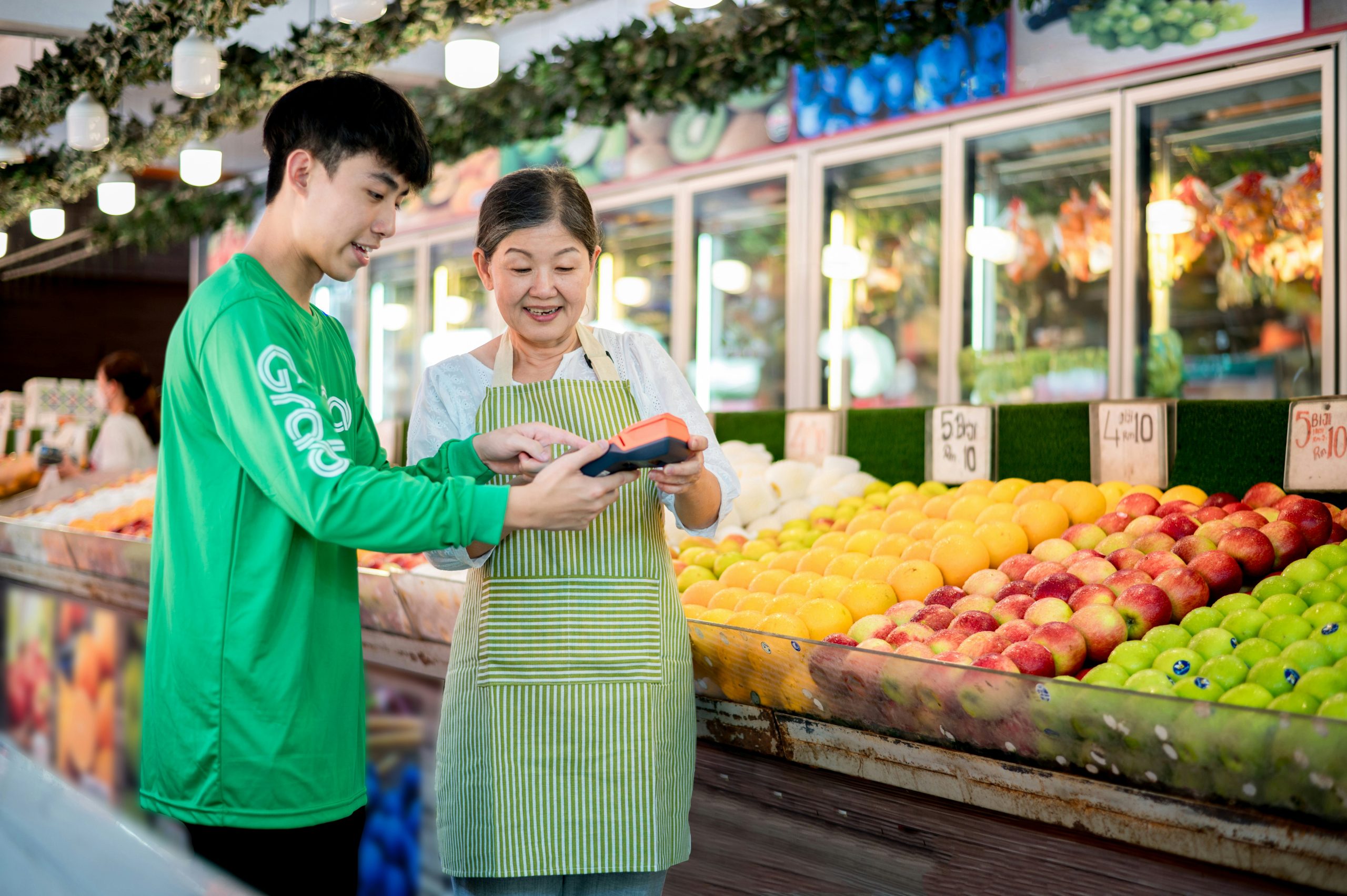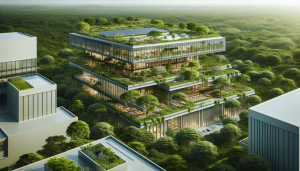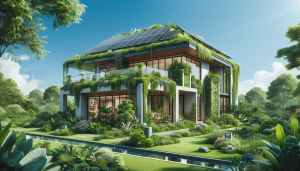What are the economic benefits of green buildings? This question is on the minds of many as the global shift towards sustainability gains momentum. Green buildings aren’t just about saving the planet; they also make a lot of economic sense. Let’s explore how making our built environment more sustainable can benefit us financially.

Understanding Green Buildings
What Defines a Green Building?
Green buildings are designed and built in an environmentally responsible way. This involves several aspects such as energy efficiency, water conservation, and the use of sustainable or recycled building materials. Our primary goal with green buildings is to minimize negative impacts on the environment while also offering benefits to our economic well-being.
Importance of Green Buildings
The importance of green buildings is multifaceted, affecting not only our environment and health but also the economy. By investing in green buildings, we create structures that use resources more efficiently and reduce operational costs, ultimately leading to higher economic returns.
Economic Benefits of Green Buildings
Reduced Operating Costs
One of the most immediate benefits we can achieve through green buildings is reduced operating costs. These savings primarily come from lower energy and water expenses.
| Example | Traditional Buildings | Green Buildings |
|---|---|---|
| Energy Costs | High | Low |
| Water Costs | High | Low |
| Maintenance Costs | High | Low |
Using energy-efficient systems, water-saving fixtures, and sustainable materials makes a significant difference in these numbers. Over time, the initial investment pays off through reduced utility bills and maintenance costs.
Boost in Property Value
Investing in green buildings adds to property value. Sustainable buildings tend to be more attractive to buyers and renters looking for eco-friendly properties. The market value of green buildings is generally higher due to their lower operating costs, better tenant retention, and increased demand.
Higher Occupancy Rates
Occupancy rates tend to be higher in green buildings compared to non-green counterparts. Why? Because tenants nowadays are more environmentally conscious. Features such as clean air, natural lighting, and renewable energy sources make green buildings more appealing places to live and work.
Tax Incentives and Rebates
Governments around the world recognize the importance of green buildings and often provide tax incentives and rebates to encourage developers. These financial perks can significantly offset the initial costs of incorporating green technologies into a building project.
Job Creation
The shift toward green buildings has led to the creation of numerous jobs in the sustainability sector. This includes roles in construction, design, engineering, and maintenance. As we adopt more green building practices, we contribute to a growing job market in sustainability and environmental management.
Health and Productivity Benefits
Although more difficult to quantify, the health benefits of green buildings indirectly contribute to economic gains. Employees and occupants in green buildings generally experience better health, leading to fewer sick days and higher productivity. Improved indoor air quality and access to natural light can enhance mental well-being and job satisfaction, resulting in better performance and reduced healthcare costs.
Breakdown of Initial Costs vs. Long-Term Savings
Initial Investment
The upfront costs for green buildings can be higher due to the need for specialized materials and technologies. However, these costs continue to decrease as green building techniques become more mainstream and materials become less expensive.
Long-Term Savings
The long-term savings generally outweigh the initial investment. Lower energy and water bills, reduced maintenance costs, and tax incentives contribute to significant savings over the lifespan of the building.
| Cost Aspect | Initial Investment | Long-Term Savings |
|---|---|---|
| Energy Systems | High | High |
| Water Systems | Moderate | High |
| Maintenance | Low | Moderate |
| Tax Benefits | None | High |
Financial Models for Green Building Investments
Payback Period
The payback period for investing in green buildings can be relatively short, often within the first few years of operation. For example, an energy-efficient HVAC system may pay for itself through power bill savings within five years.
Return on Investment (ROI)
When evaluating the financial feasibility of a green building project, we often look at ROI. Studies have shown that green buildings generally offer a higher ROI compared to traditional buildings due to their lower operational costs and higher property values.
Financing Options
Several financing options are available specifically for green building projects. These include green loans, government grants, and specialized funds. These financial instruments can make it easier to manage the initial costs associated with green buildings.

Case Studies and Examples
Residential Green Buildings
Several cities have seen the economic benefits of green residential buildings. For instance, developments in Seattle have shown that green homes sell faster and at higher prices compared to traditional homes. These homes boast features like energy-efficient appliances and sustainable building materials, which make them more desirable on the market.
Commercial Green Buildings
Corporate giants like Google and Apple have invested heavily in green office buildings. Their headquarters are designed to maximize energy efficiency and improve employee well-being. These companies report savings in energy costs and increased productivity among employees, which translate to significant economic benefits.
Public Sector
Government buildings are increasingly adopting green standards. Schools, hospitals, and public offices built following green guidelines also show economic benefits through lower operational costs and better occupancy rates. For example, a school district in California reported savings of over $1 million annually in energy costs alone by going green.
Overcoming Financial Barriers
Addressing High Initial Costs
Initial costs can be a deterrent for many developers. To mitigate this, we can explore various financing options such as green bonds and community investment schemes. Partnering with financial institutions familiar with the benefits of green buildings can also provide tailored financial plans that ease the burden of initial investments.
Leveraging Government Support
Governments provide various forms of support, from tax incentives to direct subsidies, to promote green building initiatives. Familiarizing ourselves with these programs and utilizing them effectively can significantly lower overall project costs.
Educating Stakeholders
Educating stakeholders about the long-term benefits and financial incentives related to green buildings is crucial. Whether they are investors, tenants, or community members, understanding the economic upsides can foster more robust support for green building projects.

How to Measure the Economic Impact
Energy and Water Savings
Measuring energy and water savings is the most straightforward method to quantify the economic benefits of green buildings. Utility bills provide concrete data that can be compared before and after implementing green practices.
Increased Property Value
Appraisal of green buildings can be compared to traditional buildings in similar locations using standard real estate valuation methods. This helps in understanding the financial benefits attributed to enhanced market value.
Health and Productivity Metrics
Health and productivity gains can be measured through employee surveys, reduced sick leave days, and overall job performance evaluations. This provides a more comprehensive picture of the indirect financial benefits.
Occupancy Rates
Occupancy rates can be tracked to gauge the market acceptance of green buildings. Higher occupancy rates usually correlate with increased revenue from rentals or sales.
Future Trends in Green Buildings
Technological Advancements
We can look forward to exciting technological advancements in green building practices. Innovations such as smart building management systems, advanced insulation materials, and renewable energy solutions will continue to drive down the costs and increase the benefits of green buildings.
Policy and Regulation Support
Governments worldwide are increasingly implementing regulations that set higher standards for building sustainability. Anticipating and adapting to these policies can pre-emptively position us to benefit from future economic incentives.
Consumer Preferences
As consumer preferences shift towards more sustainable living and working environments, the demand for green buildings is expected to rise. This trend indicates a promising future for the economic viability of green buildings.
Climate Goals
Many countries have set ambitious climate goals that include significant reductions in carbon emissions. Green buildings will undoubtedly play a pivotal role in achieving these targets, further escalating their economic appeal.

Conclusion
We’ve laid out a comprehensive view of the economic benefits of green buildings, highlighting not just the immediate cost savings but also the long-term financial advantages. From lower operating costs and tax incentives to increased property values and higher occupancy rates, green buildings present a compelling case for both environmental stewardship and economic prudence. By understanding and leveraging these benefits, we contribute to a sustainable future that makes economic sense.




